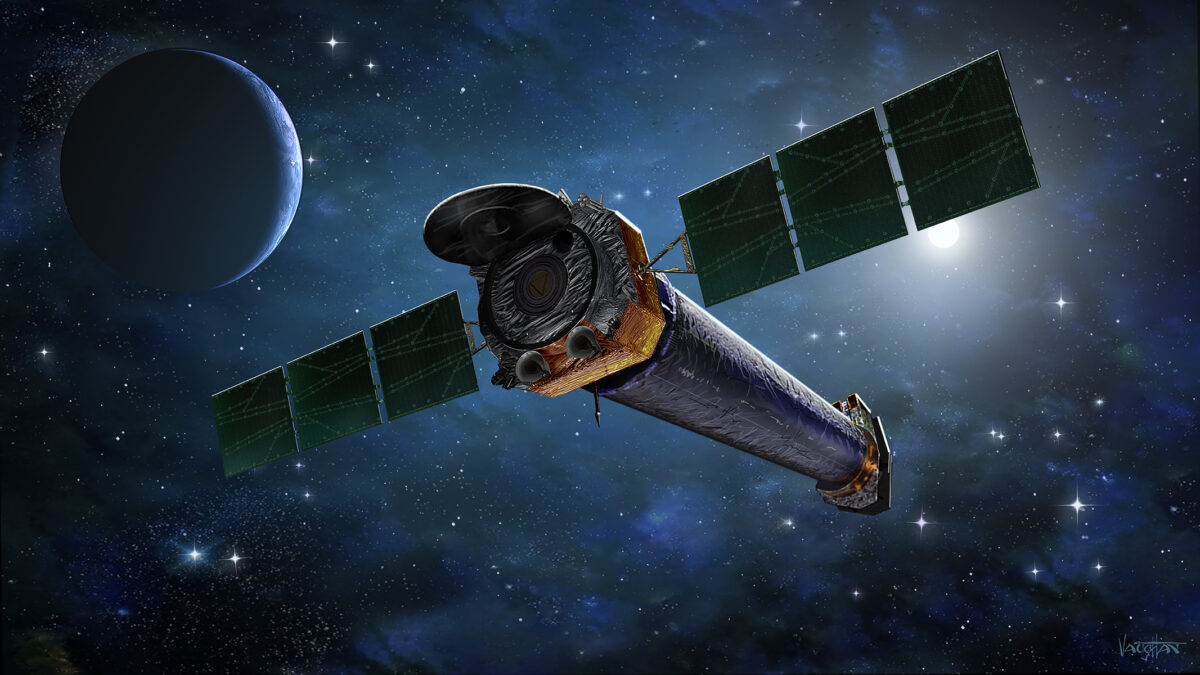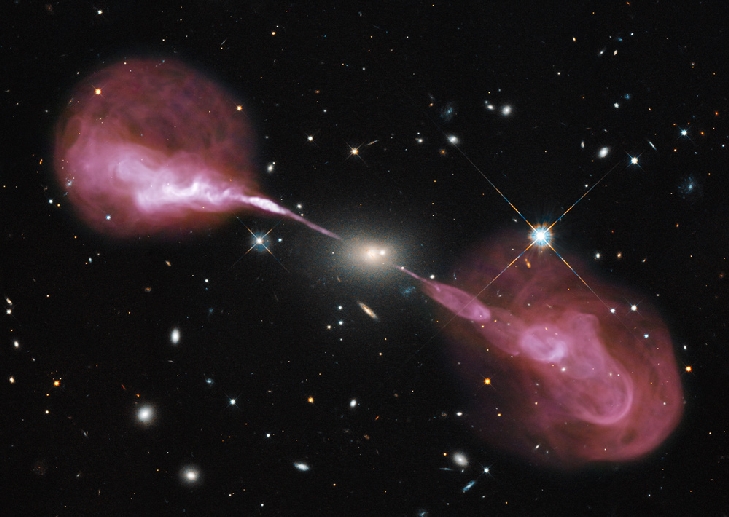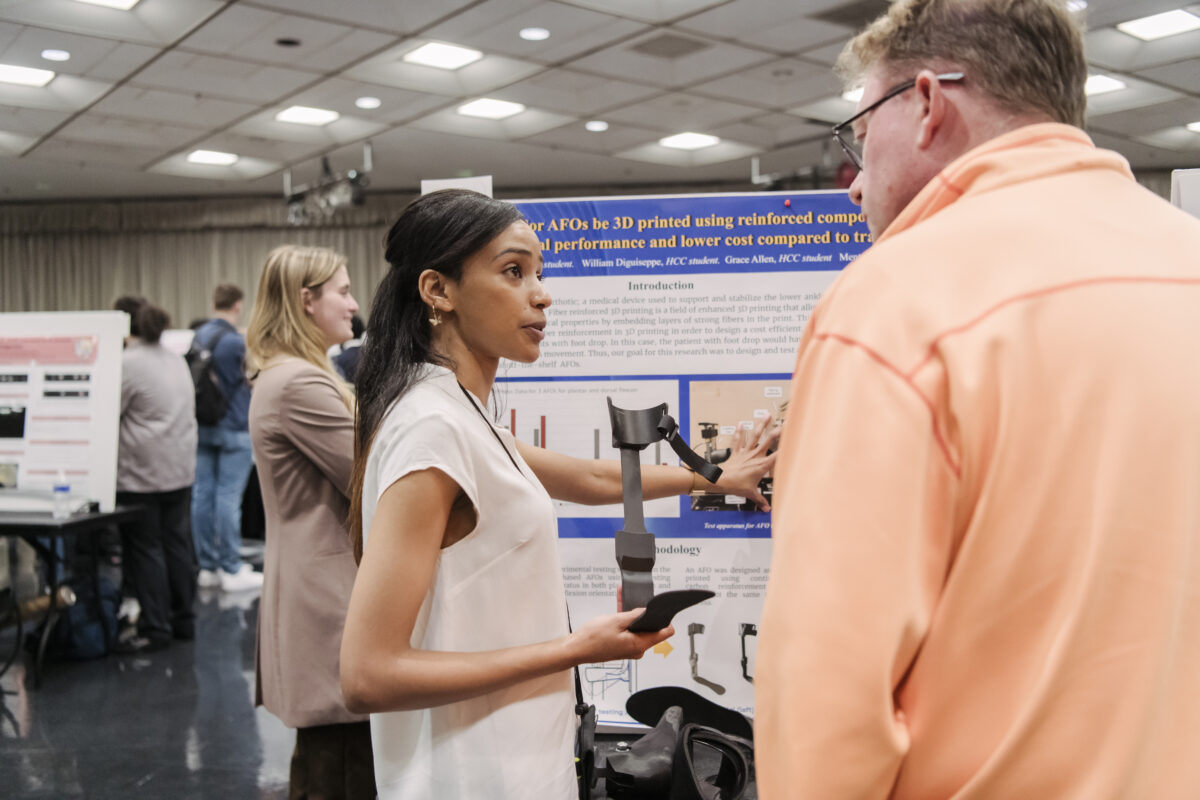Researchers discovered only relatively recently that black hole jets emit x-rays, and how the jets accelerate particles to this high-energy state is still a mystery. Surprising new findings in Nature Astronomy appear to rule out one leading theory, opening the door to reimagining how particle acceleration works in the jets—and possibly also elsewhere in the universe.
One leading model of how jets generate x-rays expects the jets’ x-ray emissions to remain stable over long time scales (millions of years). However, the new paper found that the x-ray emissions of a statistically significant number of jets varied over just a few years.
“One of the reasons we’re excited about the variability is that there are two main models for how x-rays are produced in these jets, and they’re completely different,” explains lead author Eileen Meyer, associate professor of physics. “One model invokes very low-energy electrons and one has very high-energy electrons. And one of those models is completely incompatible with any kind of variability.”
For the study, the authors analyzed archival data from the Chandra X-ray Observatory, the highest-resolution x-ray observatory available. The research team looked at nearly all of the black hole jets for which Chandra had multiple observations, which amounted to 155 unique regions within 53 jets.
Discovering relatively frequent variability on such short time scales “is revolutionary in the context of these jets, because that was not expected at all,” Meyer says.

Rethinking particle acceleration
In addition to assuming stability in x-ray emissions over time, the simplest theory for how jets generate x-rays assumes particle acceleration occurs at the center of the galaxy in the black hole “engine” that drives the jet, Meyer explains. However, the new study found rapid changes in x-ray emissions all along the length of the jets. That suggests particle acceleration is occurring all along the jet, at vast distances from the jet’s origin at the black hole.
“There are theories out there for how this could work, but a lot of what we’ve been working with is now clearly incompatible with our observations,” Meyer says.
Interestingly, the results also hinted that jets closer to Earth had more variability than those much farther away. The latter are so far away, that by the time the light coming from them reaches the telescope, it is like looking back in time. It makes sense to Meyer that older jets would have less variability. Earlier in the universe’s history, the universe was smaller and ambient radiation was greater, which researchers believe could lead to greater stability of x-rays in the jets, Meyer says.

Critical collaboration
Despite Chandra’s outstanding imaging resolution, the data set posed significant challenges. Chandra observed some of the pockets of variability with only a handful of x-ray photons. And the variability in x-ray production in a given jet was typically tens of percent or so. To avoid unintentionally counting randomness as real variability, Meyer collaborated with statisticians at the University of Toronto and the Imperial College of London.
“Pulling this result out of the data was almost like a miracle, because the observations were not designed to detect it,” Meyer says. The team’s analysis suggests that between 30 and 100 percent of the jets in the study showed variability over short time scales. “While we would like better constraints,” she says, “the variability is notably not zero.”
A call to action
The research unfolded over nearly a decade. Meyer first submitted a proposal to do the archival study with the Chandra X-ray Observatory in 2014, when she was still a postdoc, and it became one of her first funded projects at UMBC. Several undergraduate and graduate UMBC students, including four who are authors on the new paper, contributed to the work. Plus, Meyer’s group applied several different statistical methods before calling in external colleagues for support.
“We had to start over about three different times,” Meyer says. “But I stuck with it, because I really felt that there was something important here.”
Given the import of the findings, clearly Meyer’s intuition served her well. The new paper pokes significant holes in one of the major theories for x-ray production in black hole jets, and Meyer hopes the paper spurs future work. “Hopefully this will be a real call to the theorists,” she says, “to basically take a look at this result and come up with jet models that are consistent with what we’re finding.”




